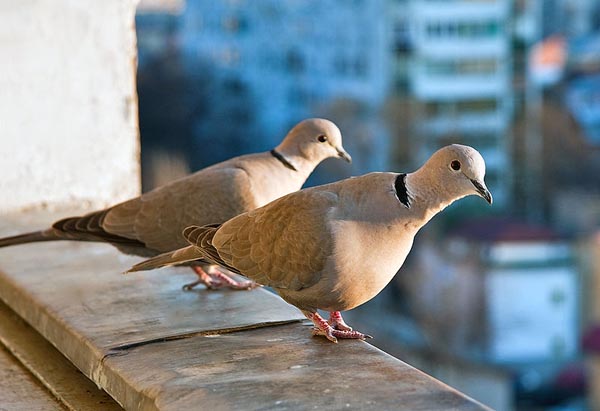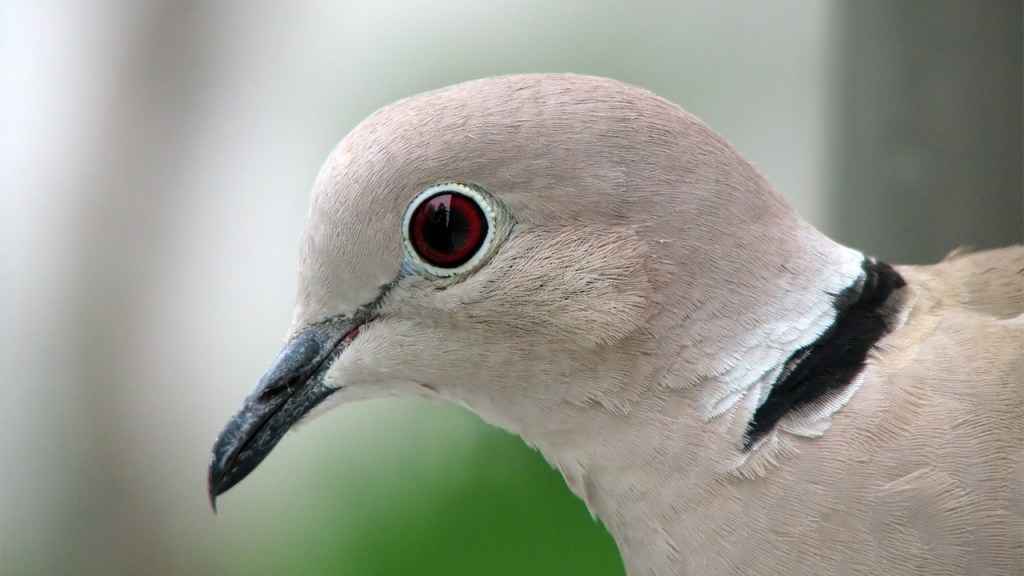The Great Backyard Bird Count (GBBC) — one of the largest citizen science initiatives in the world – annually documents a wide variety of bird population trends.
To my mind, one of the most interesting has been the dramatic spread of the non-native Eurasian collared dove across North America.
The GBBC asks citizen birders to watch an area for at least twenty minutes sometime during a four-day period in mid-February (this year’s count concluded yesterday), and record the birds they see.
Just ten years ago, seeing a Eurasian collared dove would have been a novelty. No more: the doves are now commonly reported by birders in most of the United States.
GBBC data tell the story of this rapid spread.
In the 1970s, the Eurasian collared dove was introduced to the Bahamas. By the early 1980s, the non-native birds made their way to South Florida, where they established populations. Then they began spreading north and west.
Their range appears to have expanded slowly at first. A look at GBBC reports from 1998 show a lot of sightings in Florida, with some birds reported in Texas, Alabama and Arkansas.
By 2001, the doves reached California.
Last year’s bird count results showed the Eurasian collared dove had colonized much of the country. It has not (yet) been reported in New England, but it has reached as far north as Alaska.
The GBBC’s video map dramatically illustrates this expansion.
In my state of Idaho, the doves were first recorded in 2005 by two backyard birders. In subsequent years, the bird was commonly reported in Idaho’s eastern corners. Last year, 132 GBBC participants reported 719 doves throughout the state.
I saw my first Eurasian collared dove in our backyard in 2008 – a banded bird that may have been an escaped pet. Last year, I began seeing the doves hanging around our neighborhood. This year was the first that I noted the species during my own participation in the Great Backyard Bird Count.
What’s going on here? Should conservationists be concerned about this spread?
Unlike some dove species, Eurasian collared doves aren’t migratory. However, they do readily expand into new suitable habitat. In fact, in their native Asia, Eurasian collared doves have been rapidly expanding their range as well – colonizing new countries every year.
The dove is one of those species that adapts well to humanity. The trees, power lines and bird feeders of suburbia provide perfect habitat. The Eurasian collared dove is almost always seen near homes and farms, not unbroken forest or prairie.
Research indicates it is not adversely affecting native mourning doves or other birds. It may simply be filling a new habitat niche created by suburban habitat. But it is still early in the spread.
Could Eurasian collared doves become an invasive threat? That remains to be seen.
Citizen science projects like the GBBC and another citizen initiative, Project FeederWatch, will help scientists continue to track the spread and impacts of the species. It will be interesting to learn what this year’s count found about Eurasian collared doves. If past years are any indication, their populations will likely have grown and spread into new areas of the country.
Have you seen Eurasian collared doves in your area? Have you noted other trends during your backyard bird counts? Let us know what you’re seeing!





I have one here on topsail island nc
A ha!!! Thank you so much for this post. We have a group of these who feed in our back yard. They are lovely and I finally decided to Google them and see what they were. The results were puzzling. Native to South Africa? That can’t be right. Yet, everywhere I looked I found information that these birds were NOT supposed to be in my backyard, but rather soaring above lions and giraffes above a savanna somewhere. I’ve been trying to discover HOW IN THE WORLD they came to dine in my backyard. Voila! Your post provided the insight. Again, thank you. Oh, and if it helps, this group lives in the City of Rialto, County of San Bernardino, California.
we have a pair that have been coming here. We are in Coarsegold Ca. 10 miles from the claimed center of the state. Located aprox 1 hour from the south entrance to Yosemite.
I have a pair of collared doves nesting in my neighbors tree for the last 3 years in Hope BC.
we thought they were owls because of the call they have.Nice to have them here,but we never see the young.
Wayne
First seen on our water feeder in mid-June , Estes Park, CO at 7800 feet. Now a mating pair visiting daily for water.
I’m interested in the comment that the Eurasian doves have no impact on native populations. We used to have mourning doves in our yard here in Northern California. After the first Eurasian collared doves appeared in the yard, the mourning doves began disappearing. I saw the Eurasian doves chasing the smaller mourning doves out of the yard.
The yard is now full of the new dove, and I have not seen a mourning dove in several years.
In addition to being aggressively territorial with the native species, the Eurasian dove seems to reproduce all year round, whereas the mourning doves seemed to reproduce once a year, which has probably also had an impact.
I’ve have seen at least four of them in Mariposa California
Powell River, B.C., on the Pacific coast about 90 miles north of Vancouver. The first arrival was three years ago, and seemed to be a loner. The following year there were three of them in our yard and now this year, 2018, they can be seen in many parts of town. I used to feed the local birds all winter but I gave that up when these nuisances showed up. Their constant coo-cooing is really getting on our nerves but lucky for them we aren’t allowed to use firearms in town.
I saw the collared dove in the movie “ADRIFT” in Hawaii . Are they there too. We now have them in Spring Green ,Wis.
Frank
First time I have seen this bird in Grande Prairie, Alberta, Canada. Saw two and one was observed gathering nesting material so assuming this bird is here to stay.
Saw 2 Eurasian collared doves in south parking lot of Jerry’s nugget casino yesterday, 5-28-18.
I, unfortunately, have a flock of 25 to 30 birds that invade my feeder area and eat all the seed on the ground and attempt to feed on the tubular feeders too. They arrive in mass and drive out all the small birds, ravage the feed and foul the birdbaths. The doves arrive in the Spring and stay into late summer. I am NOT a fan and wonder if these birds have now become a threat to our small birds.
Glendora, CA. I have an injured youngster who I thought was a mourning dove. Upon inspection, found out that it apparently is a collared dove. Parents are aggressive at the feeder and will peck the others away.
I live in Pasadena, California, and there are 5 Eurasian collared doves in my backyard as I write this.
I support 4 bird feeders in my backyard, over the last year the Mourning Dove population has grown to about 30 (all feeding at one time), over the last 3 months I have seen a total of 6 Eurasian collared Doves again all feeding at the same time. The Eurasian Doves mainly feed in the morning hours 7 to 9am and 4 to 7pm with sporadic appearances throughout the day. They do not harass or chase the other birds. Some of the Eurasian doves are very large in comparison to the Mourning Doves. I primarily use Black Oil Sunflower Seeds as feed, I live in Southern California (92882.